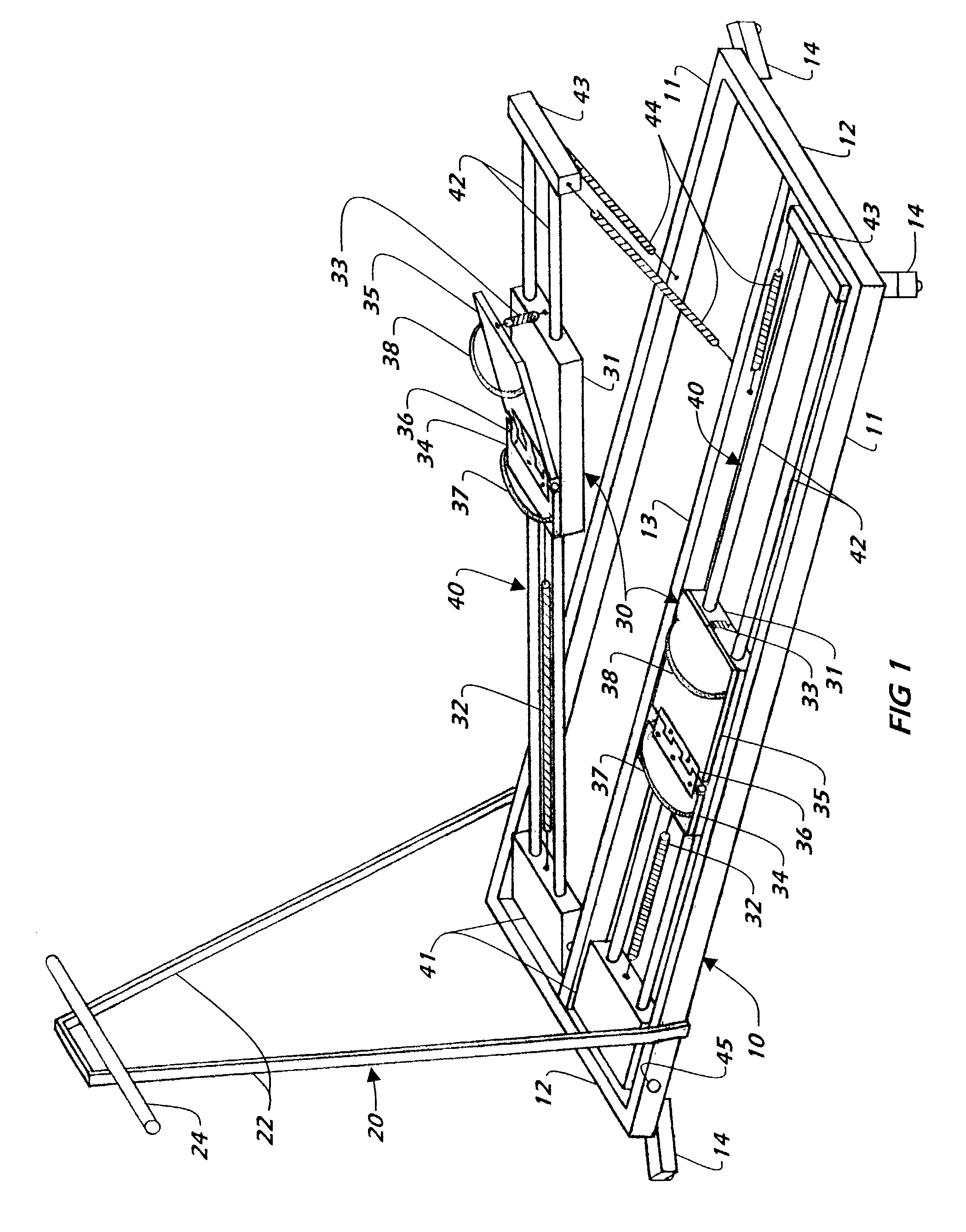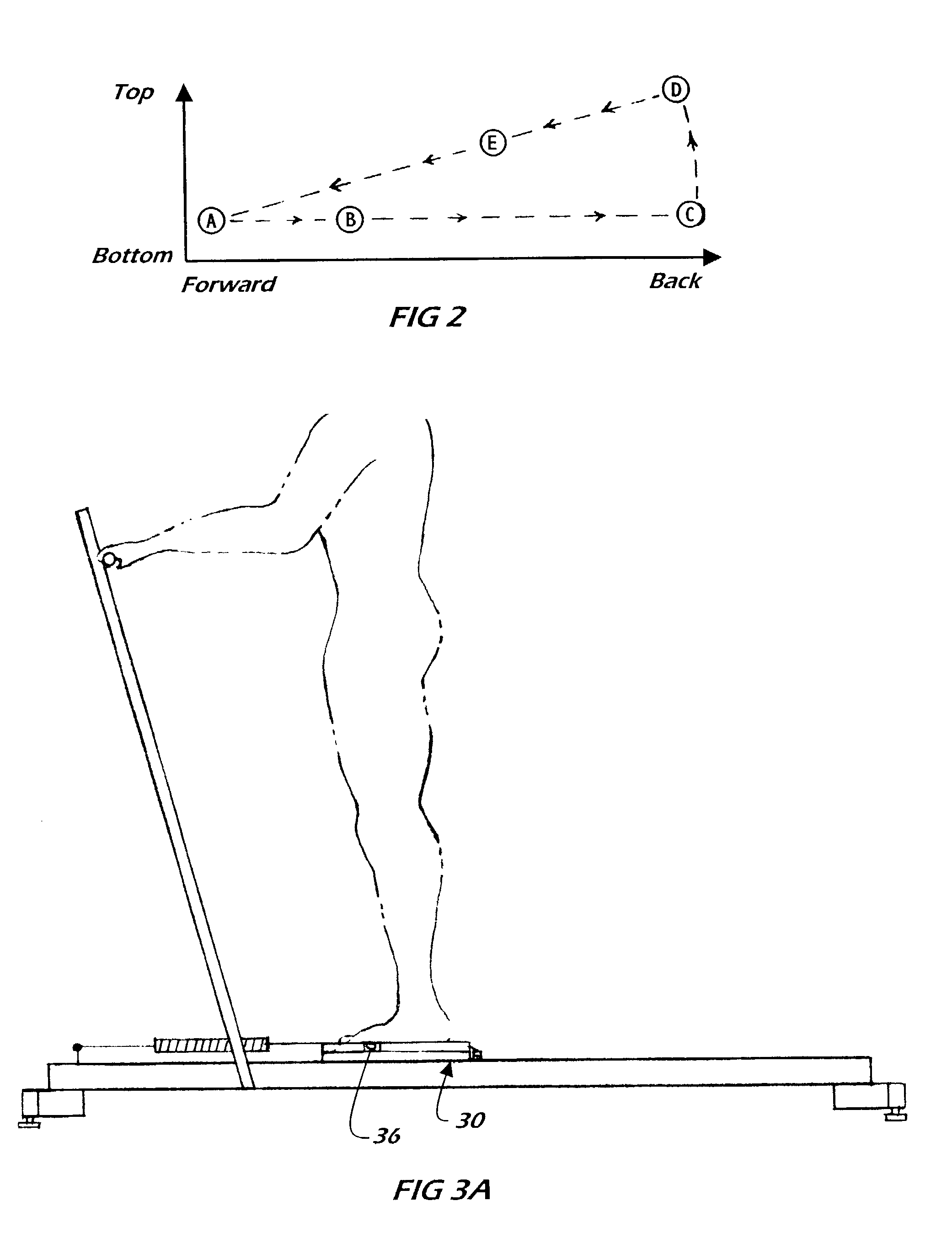Sequential contraction muscle training device
a muscle training and contraction technology, applied in the field of gluteus maximus and hamstring muscles, can solve the problems of increasing the likelihood of knee injuries and strength differences, and achieve the effects of strengthening these muscles, improving running speed and jumping skills, and increasing strength, power and neurological activity
- Summary
- Abstract
- Description
- Claims
- Application Information
AI Technical Summary
Benefits of technology
Problems solved by technology
Method used
Image
Examples
Embodiment Construction
[0018]The exercise / training device shown in FIG. 1 comprises four main assemblies; a frame, e.g., frame body assembly 10, a body support assembly 20, two footplate assemblies 30, and two slide bar assemblies 40, each of which is pivotally affixed to the forward end of the frame body assembly 10. The frame body assembly 10 provides the support structure for the device and is a generally rectangular frame with a forward end and a back end wherein the forward end is in front of a user and the back end is to the rear of a user. It generally comprises two longer side members 11, two shorter end members 12, and a single long central member 13. The frame body 10 preferably rests on four lateral supports 14 extending out from and at each corner of the rectangular framework. These lateral supports 14 are of sufficient length to provide lateral stability during exercise and contain elements at each end capable of leveling the device during setup. They also incorporate materials that prevent s...
PUM
 Login to View More
Login to View More Abstract
Description
Claims
Application Information
 Login to View More
Login to View More - R&D
- Intellectual Property
- Life Sciences
- Materials
- Tech Scout
- Unparalleled Data Quality
- Higher Quality Content
- 60% Fewer Hallucinations
Browse by: Latest US Patents, China's latest patents, Technical Efficacy Thesaurus, Application Domain, Technology Topic, Popular Technical Reports.
© 2025 PatSnap. All rights reserved.Legal|Privacy policy|Modern Slavery Act Transparency Statement|Sitemap|About US| Contact US: help@patsnap.com



